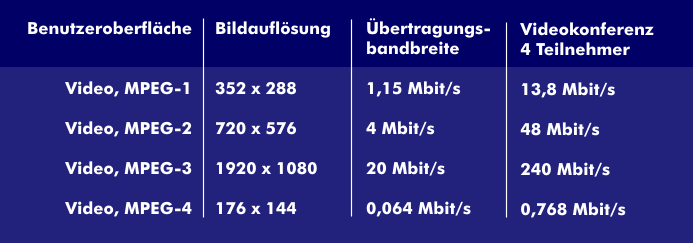moving picture experts group (MPEG)
Moving Picture Experts Group (MPEG) stands equally for a standardization body and for several asymmetric coding methods, as well as for various file formats for image, moving picture and audio compression.
MPEG compression is used for digital video on computers, for streaming media, and for the transmission of digital television images. In 1988, the International Standards Organization( ISO) and the International Electrotechnical Commission( IEC) began developing a standard for video compression and audio compression, the first version of which was adopted in 1992 as MPEG-1 under ISO 11172. Audio compression is used in compact discs(CDs), DVDs, and digitalaudio broadcasting( DAB), among other applications.
MPEG is a lossy compression, which means that the original image can no longer be reproduced exactly during decoding. Furthermore, encoding is technically much more complex than decoding.
The different MPEG versions.
MPEG-1 was adopted in 1992 and is an integrated standard for encoding moving images with associated audio for storage on compact discs (CDs). The MPEG-1 standard is divided into a video part and an audio part. MPEG-1 audio provides for the encoding of mono and stereo signals. MPEG-1 corresponds in video playback quality to the resolution ofVHS and is suitable for multimedia presentations on CD-ROM or Compact Disc Interactive( CD-I).
MPEG-2 was standardized at the end of 1994 for the transmission of moving images in standard television quality and studio quality with multiple sound channels. MPEG-2 is characterized by its high flexibility in audio compression, supports audio for the highest demands and can theoretically form a surround sound from up to 48 channels.
MPEG-4 was introduced in 1999 and, unlike MPEG-1 and MPEG-2, does not specify a single compression scheme, but defines a collection of audio and video compression schemes. MPEG-4 provides a framework that supports the integration of arbitrary media objects, as well as the interaction between human users and the audiovisual world.
MPEG-7 was standardized in 2001 to describe multimedia content and provide a classification system for the many MPEG variants. MPEG-7 takes into account textual information in addition to audiovisual content and is supported by Description Definition Language( DDL). XML applications will be used to develop a Multimedia Description Scheme( MDS) to identify audio and video content using keywords.
MPEG-21 supports multimedia messaging. The previous demarcation in terms of firmly structured user groups such as video studios is thus opening up to consumer electronics. The end user thus has the possibility of combining personal photos, audio and video sequences with third-party productions. Further processing can also take place online, and the semi-professional recordings and video clips can also be offered to commercial providers.

